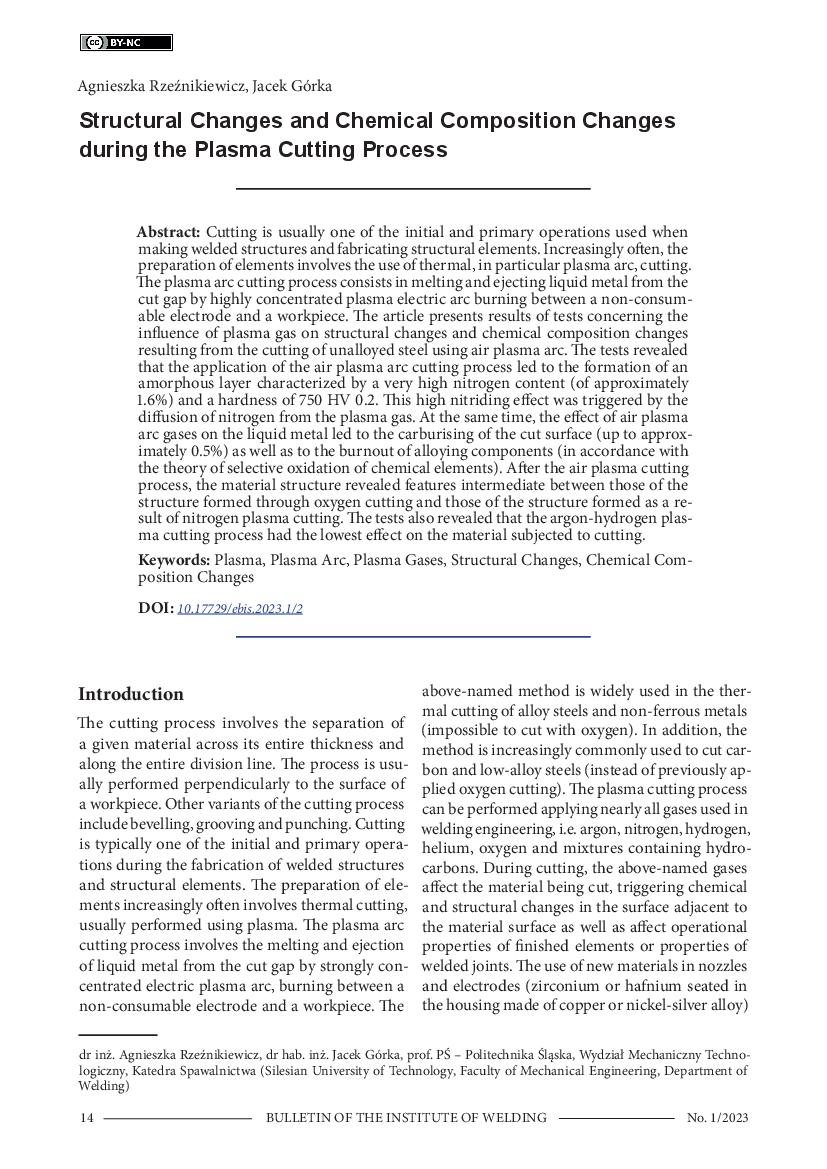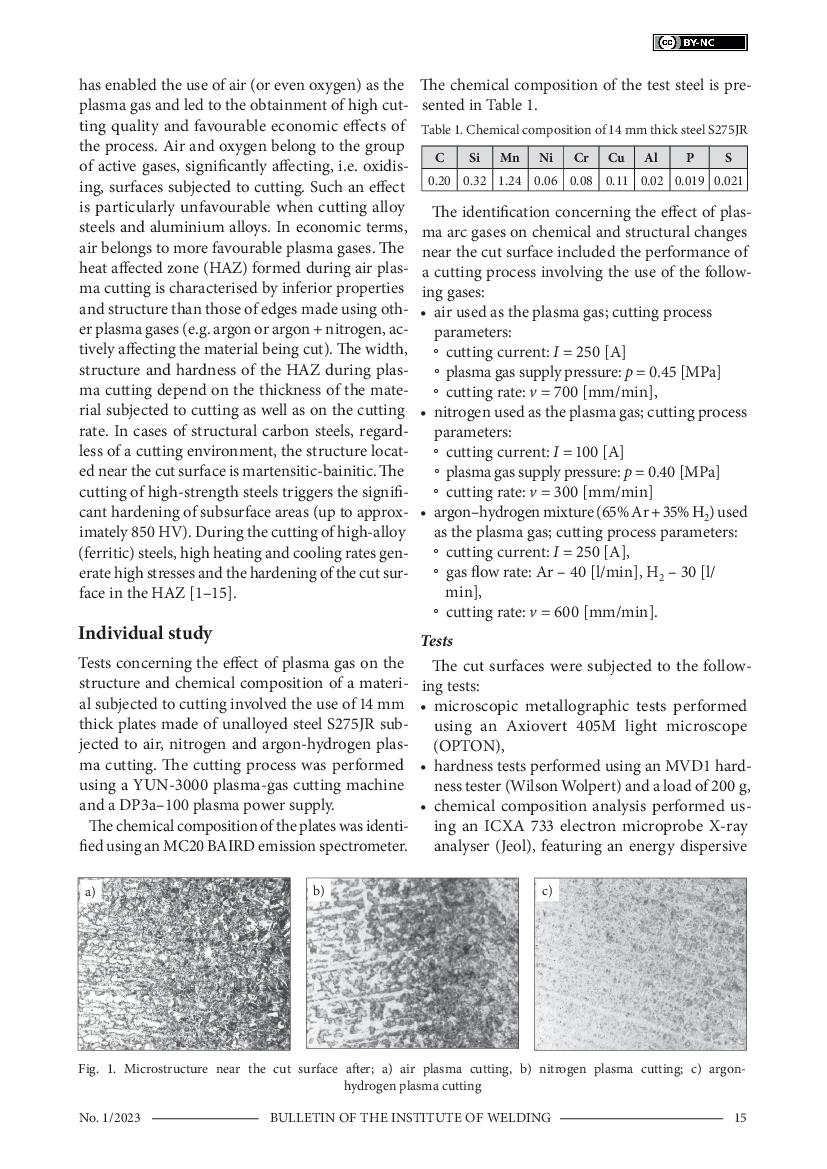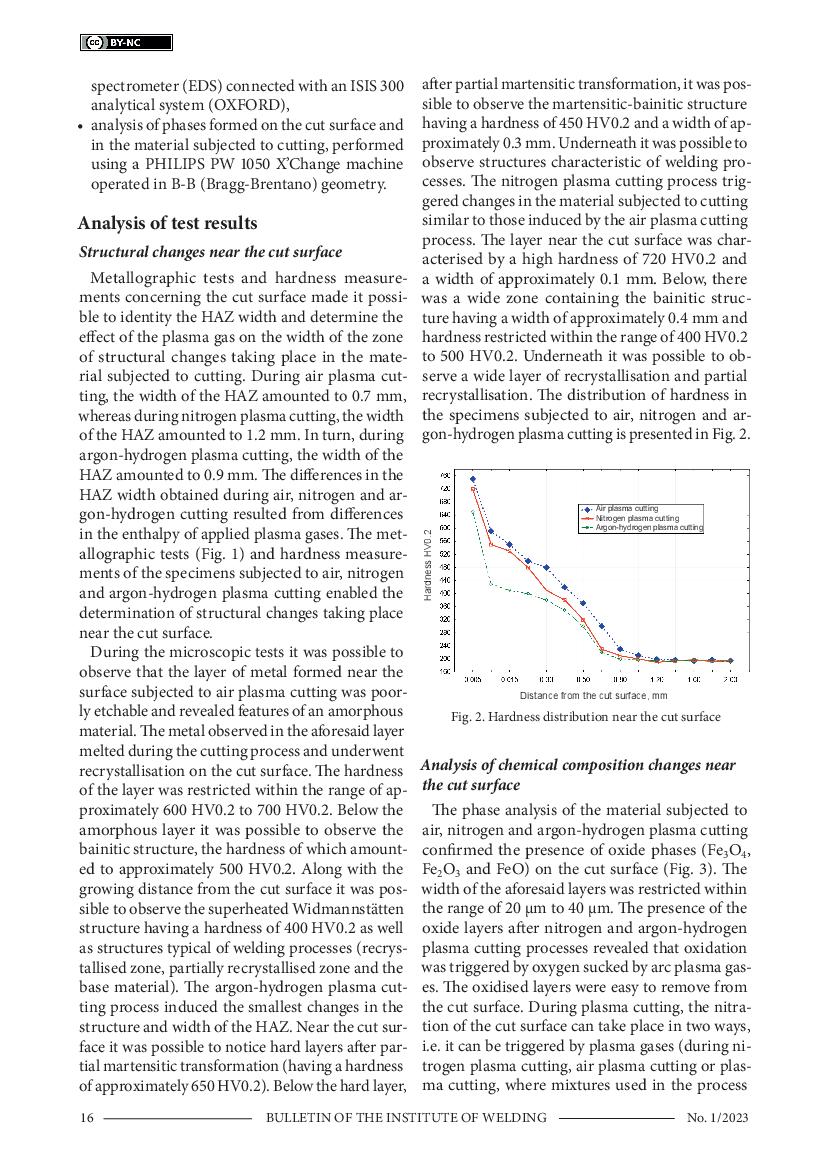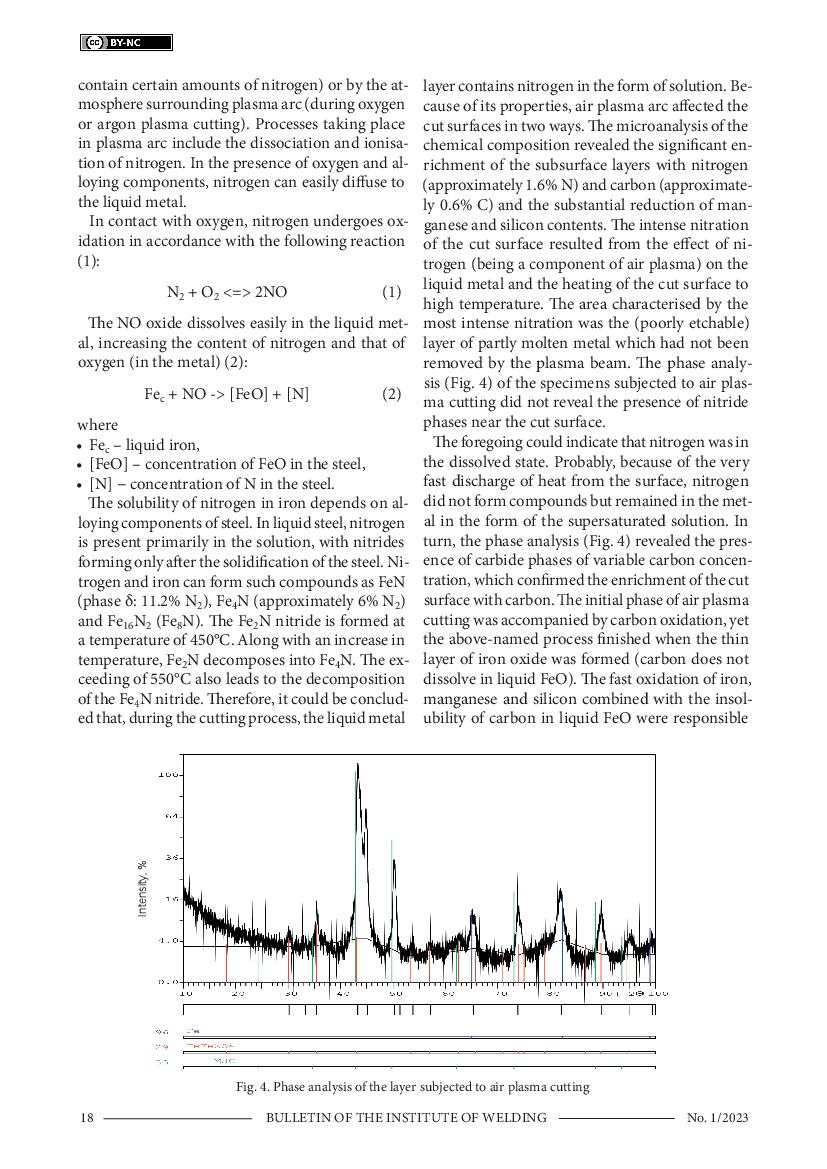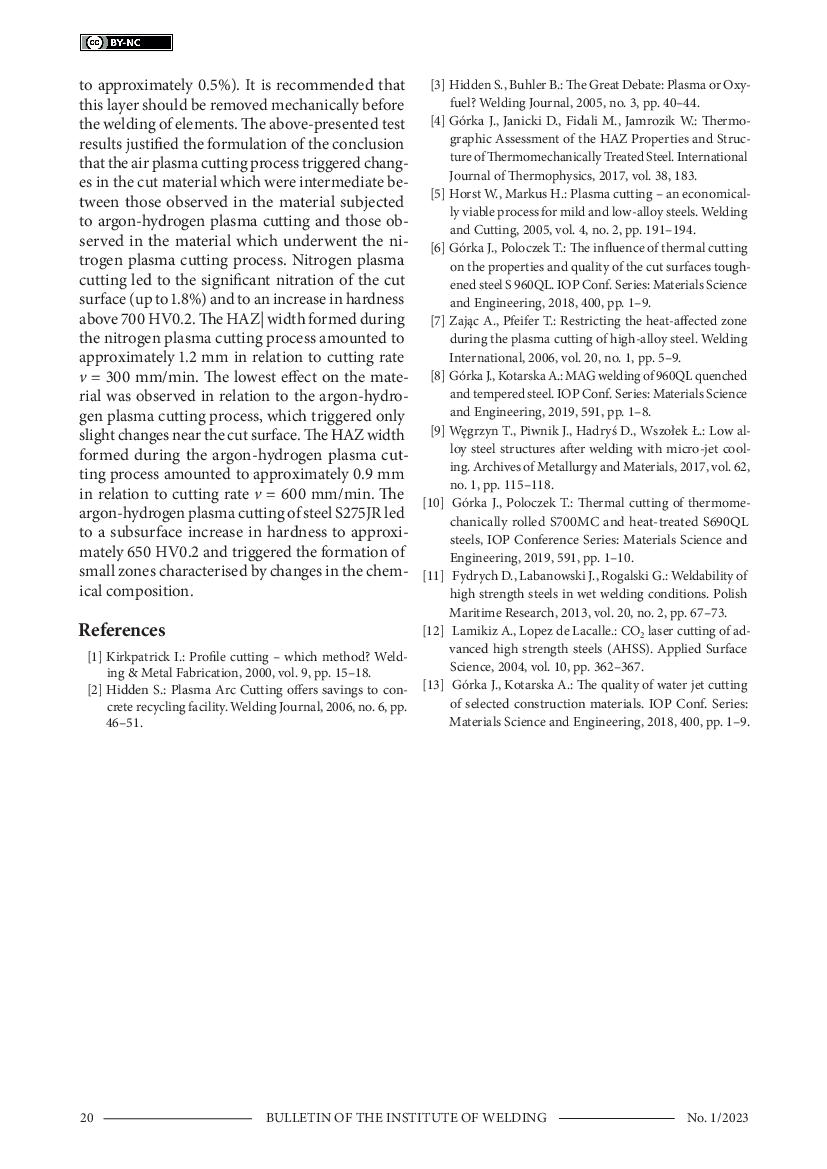Structural Changes and Chemical Composition Changes during the Plasma Cutting Process
Cutting is usually one of the initial and primary operations used when making welded structures and fabricating structural elements. Increasingly often, the preparation of elements involves the use of thermal, in particular plasma arc, cutting. The plasma arc cutting process consists in melting and ejecting liquid metal from the cut gap by highly concentrated plasma electric arc burning between a non-consumable electrode and a workpiece. The article presents results of tests concerning the influence of plasma gas on structural changes and chemical composition changes resulting from the cutting of unalloyed steel using air plasma arc. The tests revealed that the application of the air plasma arc cutting process led to the formation of an amorphous layer characterized by a very high nitrogen content (of approximately 1.6%) and a hardness of 750 HV 0.2. This high nitriding effect was triggered by the diffusion of nitrogen from the plasma gas. At the same time, the effect of air plasma arc gases on the liquid metal led to the carburising of the cut surface (up to approximately 0.5%) as well as to the burnout of alloying components (in accordance with the theory of selective oxidation of chemical elements). After the air plasma cutting process, the material structure revealed features intermediate between those of the structure formed through oxygen cutting and those of the structure formed as a result of nitrogen plasma cutting. The tests also revealed that the argon-hydrogen plasma cutting process had the lowest effect on the material subjected to cutting.
DOI: 10.17729/ebis.2023.1/2
 1 / 7
1 / 7
 2 & 3 / 7
2 & 3 / 7
 4 & 5 / 7
4 & 5 / 7
 6 & 7 / 7
6 & 7 / 7


